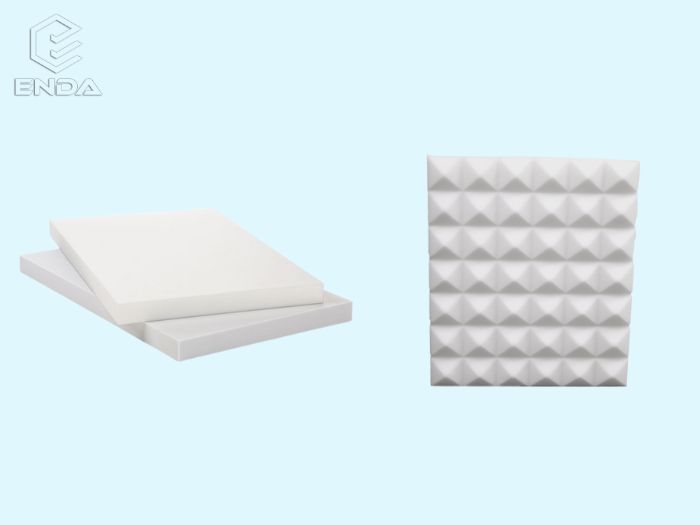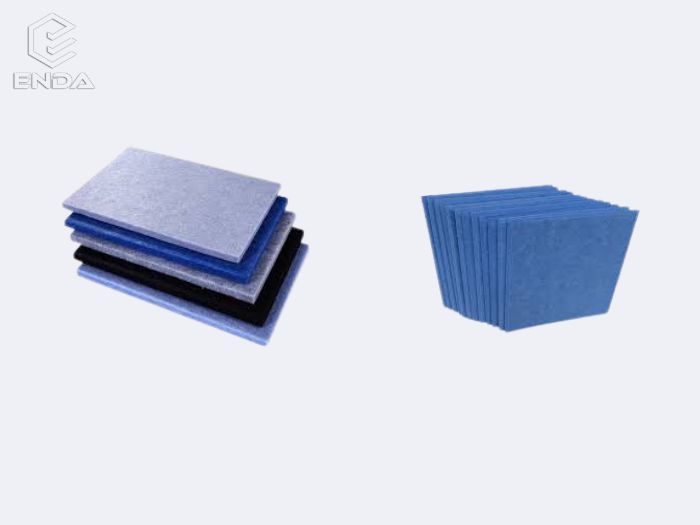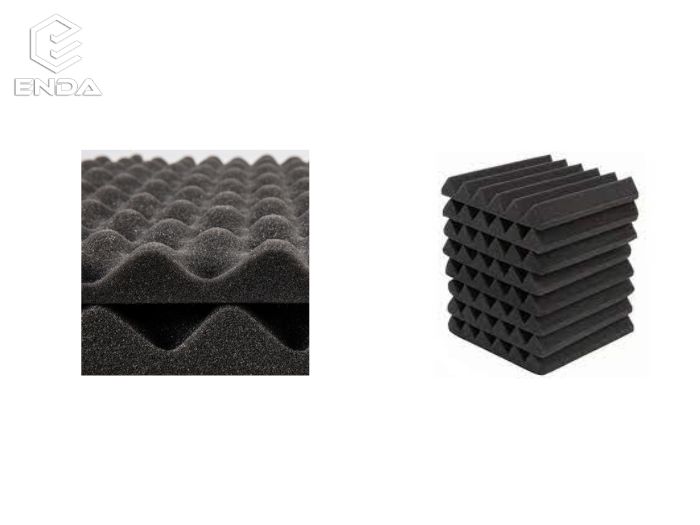
What is the best foam for absorbing sound?
Porous Open-Cell Foam is an ideal choice for sound absorption. The foam is made up of small open cells that trap sound waves and convert the sound energy into heat, reducing noise pollution in enclosed areas. Porous open-cell foam is highly effective in controlling low, miedum an high frequency sounds. Among various open cell sound absorbing foams, which sound absorbing foam is the best?
Below we will compare these three common porous open cell sound-absorbing foams on the market in terms of sound absorption index and absorption frequency, melamine sound-absorbing foam, polyester sound-absorbing foam and polyurethane sound-absorbing foam.
Melamine Sound Absorbing Foam
Melamine sound absorbing foam is highly effective at absorbing high-frequency sound waves, typically above 2000 Hz. It is particularly good at absorbing frequencies between 5000 Hz and 10,000 Hz. From the point of view of sound absorption index, the sound absorption index of ordinary sound absorbing melamine foam reaches over 0.95, and the sound absorption index of Enda pyramid-shaped sound-absorbing melamine foam is close to 1.
 Melamine sound absorbing foam
Melamine sound absorbing foam
Polyester Sound Absorbing Foam
Polyester sound absorbing foam is a flexible foam material that has superior sound-absorbing properties, which is suitable for absorbing mid-range frequencies, typically ranging between 500 Hz to 4,000 Hz. From the point of view of sound absorption index, the sound absorption index of ordinary sound absorbing polyester foam from 0.2 to 0.8.
 Polyester sound absorbing foam
Polyester sound absorbing foam
Polyurethane Sound Absorbing Foam
Polyurethane sound absorbing foam is suitable for absorbing sound across a wide frequency range, including mid-range to high-range frequencies. Generally, polyurethane sound absorbing foam is most effective at absorbing frequencies between 500 Hz and 4,000 Hz. Generally, the sound absorption coefficient ranging of polyurethane sound absorbing foam from 0.5 to 1.0.
 Polyurethane sound absorbing foam
Polyurethane sound absorbing foam
The sound absorption effect of these sound absorbing foam can vary depending on the specific formulation, density, and thickness of the foam. Thicker and denser sound absorbing foam can absorb sounds more effectively than thinner and less dense foam. Each sound absorbing foam has its own specific frequency range that it is good at. As for which foam is the best sound-absorbing foam, it also depends on which frequency sound you want to absorb, or what occasion it is used for.
If you are looking for sound absorbing foam for HVAC system, recording studio and industrial environment, you can contact us, we are a professional melamine sound absorbing foam manufacturer.
message
lf you have any questions, please leave your contact information so that we can get in touch with you
- QDo you want to buy or customize sponge products?
- Yes, I want to buy sponge products.
- Yes, I want to customize sponge products.
- QWhich product are you interested in?
- Cleaning Sponge
- Industrial Sponge
- Other Cleaning Products







